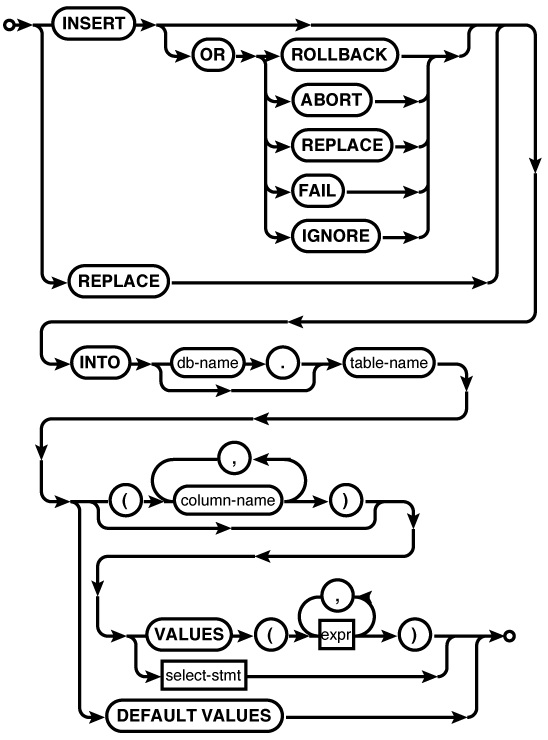Name
INSERT — Insert new rows into a table
Syntax

Common Usage
INSERT INTOdatabase_name.table_name(col1,col2) VALUES (val1,val2); INSERT INTOtable_nameVALUES (val1,val2,val3... ); INSERT INTOtable_name(col1,col2) SELECTc1, c2 FROM...; INSERT INTOtable_nameDEFAULT VALUES; INSERT OR IGNORE INTOtable_name(col1,col2) VALUES (val1,val2); REPLACE INTOtable_name(col1,col2) VALUES (val1,val2);
Description
The INSERT command adds new rows to tables. An
individual INSERT command can
only insert rows into one table, and in most cases can only
insert one row at a time. There are several variants of the
INSERT command. The
primary differences relate to how the columns and values are
specified.
The basic format of the INSERT command starts with the
command word INSERT, followed
by an optional conflict resolution clause (OR ROLLBACK, etc.). The INSERT conflict resolution
clause is identical to the one found in the UPDATE command. See UPDATE for more information on the
different conflict resolution options and how they behave. The
command word REPLACE can also
be used, which is just a shortcut for INSERT OR REPLACE. This is discussed in more
detail below.
After the conflict clause, the command declares which table it is acting upon. This is generally followed by a list of columns in parentheses. This column list defines which columns will have values set in the newly ...
Get Using SQLite now with the O’Reilly learning platform.
O’Reilly members experience books, live events, courses curated by job role, and more from O’Reilly and nearly 200 top publishers.

